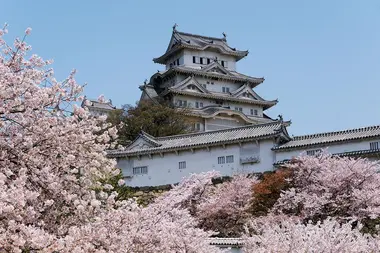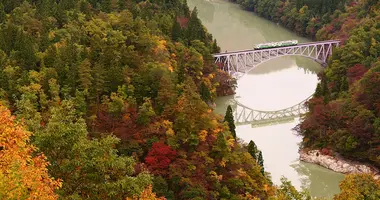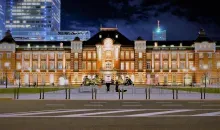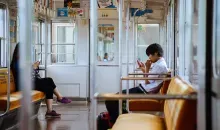How to get from Kyoto to Himeji
Himeji in Hyogo Prefecture and Kyoto, the ancient capital of Japan, are considered two of the most culture-and-history-rich locations in the Kansai Region. Getting between the two is made easy with the Shinkansen bullet train!
Getting from Kyoto to Himeji with the Shinkansen bullet train
Himeji Station
From Kyoto, the neighboring prefecture of Hyogo is home to another culture and history-rich spot: Himeji! Kyoto is the ancient capital of Japan, with 17 different UNESCO heritage sites throughout the city, and Himeji is home to one of the most prominent castles in all of Japan, the gorgeous Kokoen Garden, and the Shoshazan Engyoji Temple atop Mount Shosha. The two stations are nearby and connected via the Tokaido-Sanyo Shinkansen Line, covering 124 kilometers. Thanks to high speed rail, the journey can be as short as just under an hour with the express Nozomi Shinkansen. Other lines stop at more or every station on the line. With the Hikari Shinkansen, the trip is fully covered by the Japan Rail Pass, but riding the Nozomi Shinkansen bullet train will entail an additional cost. Individual tickets are also available for purchase.
Tokaido-Sanyo Shinkansen bullet trains available on this itinerary:
| Nozomi Shinkansen Bullet Train | Hikari Shinkansen Bullet Train |
*NOTE: All Shinkansen bullet trains on the Tokaido-Sanyo Line are accessible with the Japan Rail Pass; however, an additional fee is required to ride the Nozomi trains from Kyoto to Himeji
Reserving seats on the Shinkansen
On Shinkansen bullet trains, individual ticket holders and holders of Japan Rail Passes can reserve seats in advance of boarding. Reservations are not always required for Shinkansen bullet trains because many of them have non-reserved cars with seats that are available on a first-come, first-served basis. These are often car numbers 1-4.
There are some trains when all cars require a reservation, even though a lot of people utilize the Shinkansen bullet train services during these hours. However, we also strongly advise all visitors to try and book reservations for tickets during Japan's busiest travel seasons, which include the spring and the New Year's holiday. When purchasing a single ticket, a reserved seat costs more; however, Japan Rail Pass users will not be charged an additional cost.
Oversized Baggage on the Shinkansen
In order to board the bullet train, passengers who are carrying a lot of luggage must follow certain rules. According to Japan Railway regulations, any baggage exceeding 160 cm in length, width, and height needs to be checked into the special bulky baggage section at the back of the train car. Owners of such bags must additionally make reservations for seats near this section. Please be advised that baggage exceeding 250 cm in total is not permitted on the Shinkansen bullet train.
Baby carriages, musical instruments in cases, and sporting goods (bikes, snowboards, etc.) in cases are all excluded from these baggage limits.
NOTE: These oversized baggage rules ONLY apply to the Tokaido-Sanyo Shinkansen bullet train line. Other Shinkansen bullet trains such as the Hokuriku Shinkansen and Limited Express Trains DO NOT have a limit or special regulations in regards to reserving oversized baggage sections or compartments.
Exploring Kyoto
Japan’s former capital, Kyoto, is home to 17 different UNESCO Heritage Sites, making it a culture-rich city that is teeming with history. Kyoto is often the destination after Tokyo for those traveling the Japan Golden Route, and it is located in the Kansai region, a culturally diverse part of Japan known for its eclectic destinations.
Of some of Kyoto’s most iconic destinations, the slope up to Kyomizudera and the temple itself are worthwhile adventures. Up to the temple, the hilly roads are lined with charming shops and restaurants, so don’t be afraid to explore a bit off the beaten path! Then, the “gold and silver temples” of Ginkakuji and Kinkakuji stand as powerful symbols of Kyoto's rich history. For a more understated location, the neighborhood of Kitaoji has a calmer atmosphere that is still blessed with a medley of traditional temples and even a neighborhood favorite onsen.
While still a city, Kyoto differs from other major cities in Japan with the absence of towering skyscrapers; instead, it is surrounded by mountains on three sides and laced with traditional architecture. Take advantage of Kyoto’s unique geography and take the time to take a relaxing hike to enjoy the surrounding nature. The hike from Shogunzuka to Seiryuden is one of the easier hikes to do in the area and leads to Chion-in Temple in about two hours. Take in the unhindered view of the city from a high-elevation viewpoint and see Kyoto in a way that you’d never expect.
Arriving at Kyoto Station brings travelers right to the center of the ancient capital. The current iteration of the station was designed by acclaimed architect Hiroshi Hara and erected in 1997 to celebrate Kyoto's 1200th anniversary as a city, an accolade not many other cities in the world can claim. Not as large as other major stations like Tokyo Station, Shinjuku Station, or even Hakata Station the inside houses a few convenience stores, cafes, and restaurants.
One of the most recognizable attractions attached to Kyoto Station, however, is the illuminated staircase, whose light display changes depending on the season. Also a short walk from the station and a great spot to kill some time and relax is the locally-beloved Ume-yu, a sento bathouse with a distinct feel and eccentric merchandise that exists in a residential area.
Exploring Himeji
Himeji City is located in Kobe Prefecture, a popular destination in the Kansai Region located right next to Kyoto Prefecture. With a population a bit over 500,000 people, this is the second largest city in the prefecture and boasts a medley of great attractions that compliment the heritage of Kyoto perfectly.
For many, Himeji is a well-known spot for day trips from other parts of Kansai. At its heart, Himeji Castle stands as one of the most iconic historic attractions in Japan. Originally erected in the 1300s, the castle has been remodeled and restored a number of times over the centuries, and it is an especially beautiful scene during spring with the surrounding park decorated with cherry trees with their flowers blossoming into a pink and white scene.
Right by Himeji Castle is Kokoen Garden, and in fact, this traditional Japanese garden was built upon the location of former samurai residences in the area. There are joint tickets for visiting both Himeji Castle and the gardens, but the gardens alone will cost 300 yen for adults and 150 yen for children. The view of the garden with the strong presence of the castle in the background is a distinctly Japanese aesthetic that must be seen to be believed.
No itinerary to Himeji is complete without mention of the overwatching Mount Shosha. On top of the mountain is Engyoji Temple, a spiritual destination worth visiting. However, rest assured reaching the temple at the mountain’s peak can be done via bus or the iconic cable cars that traverse up the slope with amazing views of the surrounding area. To get to the actual temple, a bus takes people from the top, taking around five minutes.
The treasures of Kansai
Two of the most culturally rich locations in Kansai are right by each other and easily traveled between thanks to the Tokaido-Sanyo Shinkansen Line. Whether with a JR Pass or a one way ticket out, the trip from Kyoto to Himeji will be worthwhile and convenient, making for a great itinerary for your next trip to Japan!












